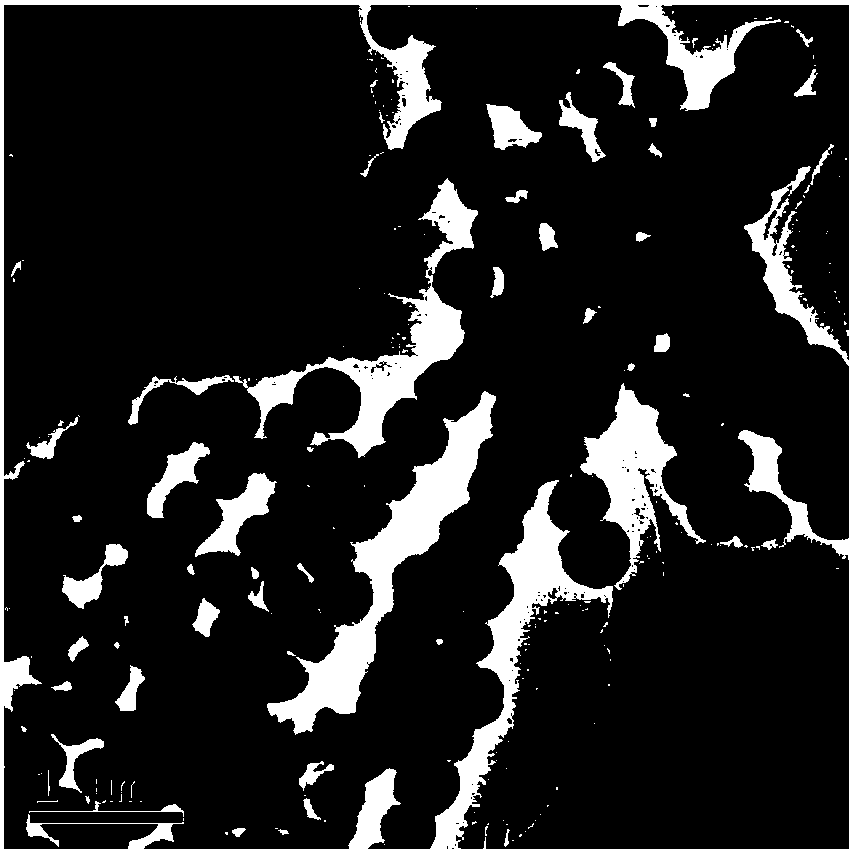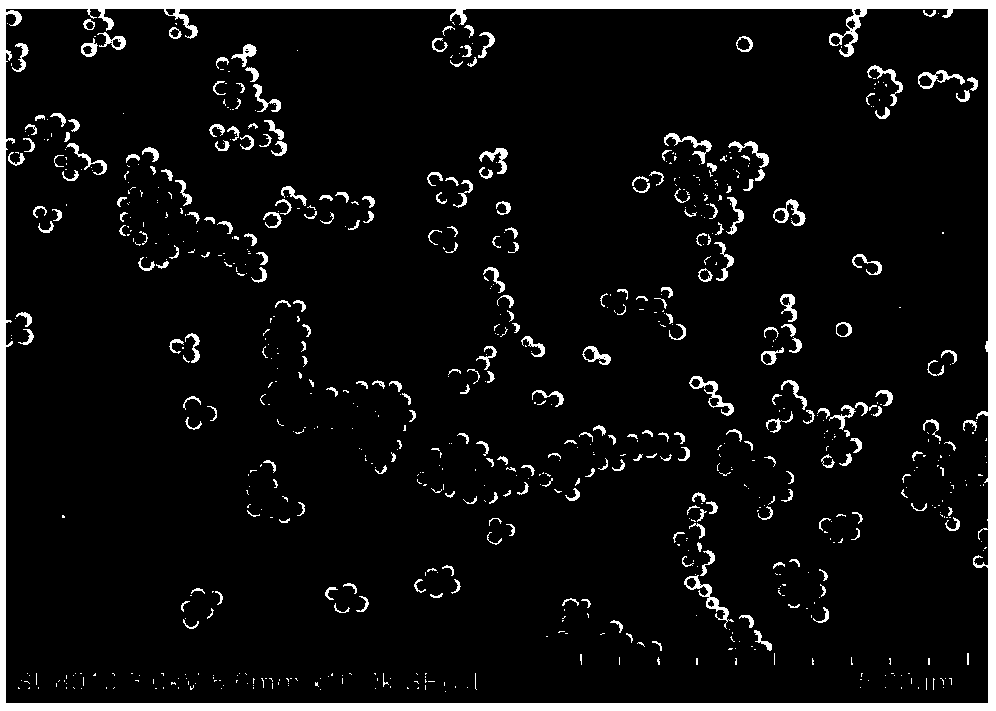Non-diagnostic purpose rapid detection method for Escherichia coli O157:H7
A technology of Escherichia coli and Escherichia coli, which is applied in the field of biological detection, can solve problems that have not been reported, and achieve the effects of improving sensitivity, improving modification efficiency, and being simple, convenient and easy to prepare
- Summary
- Abstract
- Description
- Claims
- Application Information
AI Technical Summary
Problems solved by technology
Method used
Image
Examples
Embodiment 1
[0046] (1) Fe 3 o 4 / SiO 2 Synthesis of Magnetic Nanoparticles with Core-Shell Structure
[0047] Synthesis of Fe by Solvothermal Method 3 o 4 Nanoparticles. The specific synthesis process is as follows: 0.5 g of poly(4-styrenesulfonic acid-co-maleic acid) sodium salt PSSMA was dissolved in 20 mL of ethylene glycol, and magnetically stirred to obtain a uniform orange solution. Add 0.54 g of ferric chloride hexahydrate and 1.5 g of anhydrous sodium acetate. Next, pour the obtained red-brown homogeneous liquid into a 100 mL hydrothermal reaction kettle, and react at 200° C. for 10 h. After cooling to room temperature, the obtained black precipitate was washed with ultrapure water at least three times under the action of an external magnetic field, and the volume was adjusted to 6 mL of ultrapure water for use.
[0048] Take 1 mL of the Fe prepared above 3 o 4 The solution was placed in an Erlenmeyer flask, 60mL of ethanol, 10mL of deionized water and 9mL of ammonia wate...
Embodiment 2
[0064] Example 2: Establishment of a method for rapid detection of Escherichia coli O157:H7 by signal transduction probe combined with immunomagnetic probe immuno-sandwich method
[0065] (1) Optimization of the amount of immunomagnetic probes used
[0066] The amount of immunomagnetic probes was changed to 30 μL, 35 μL, 40 μL, 50 μL and 55 μL respectively, and other experimental conditions were the same as in Example 1. Such as Figure 7 As shown, the concentration of glucose produced by sucrase hydrolysis increases continuously with the increase of the amount of capture probe, and the signal increases continuously, until the added amount reaches 50 μL, the concentration of glucose reaches the maximum, and the signal of PGM is also the strongest. As the amount continues to increase, the glucose concentration decreases instead. Therefore, the amount of capture probe added was chosen to be 50 μL.
[0067] (2) Sucrase and E.Coli O157:H7 labeled antibody modified on Au-Pt-SiO ...
Embodiment 3
[0071] Embodiment 3: Sensitivity detection
[0072] Under the detection condition of embodiment 1, have studied this detection method to 3.5 * 10 1 to 3.5×10 8 The detection results of E.Coli O157:H7 in the range of CFU / mL. The relationship between the PGM signal value and the concentration of E.Coli O157:H7 is as follows Figure 10 As shown, when the concentration of E.Coli O157:H7 is 3.5×10 2 CFU / mL to 3.5×10 6 When the CFU / mL changes, the difference between the glucose concentration and the logarithmic value of the concentration of E.Coli O157:H7 presents a good linear relationship. The linear equation is y=5.0724x-6.6421, the coefficient of variation R 2 =0.9863, and the detection limit of the method to the target bacteria E.Coli O157:H7 is 1.83×10 2 CFU / mL, the detection limit is higher than the traditional ELISA method (1.0×10 5 CFU / mL) is much lower. The concentration of E.Coli O157:H7 in the sample can be quantitatively obtained by linear regression equation...
PUM
| Property | Measurement | Unit |
|---|---|---|
| diameter | aaaaa | aaaaa |
| thickness | aaaaa | aaaaa |
| particle size | aaaaa | aaaaa |
Abstract
Description
Claims
Application Information
 Login to View More
Login to View More - R&D
- Intellectual Property
- Life Sciences
- Materials
- Tech Scout
- Unparalleled Data Quality
- Higher Quality Content
- 60% Fewer Hallucinations
Browse by: Latest US Patents, China's latest patents, Technical Efficacy Thesaurus, Application Domain, Technology Topic, Popular Technical Reports.
© 2025 PatSnap. All rights reserved.Legal|Privacy policy|Modern Slavery Act Transparency Statement|Sitemap|About US| Contact US: help@patsnap.com



